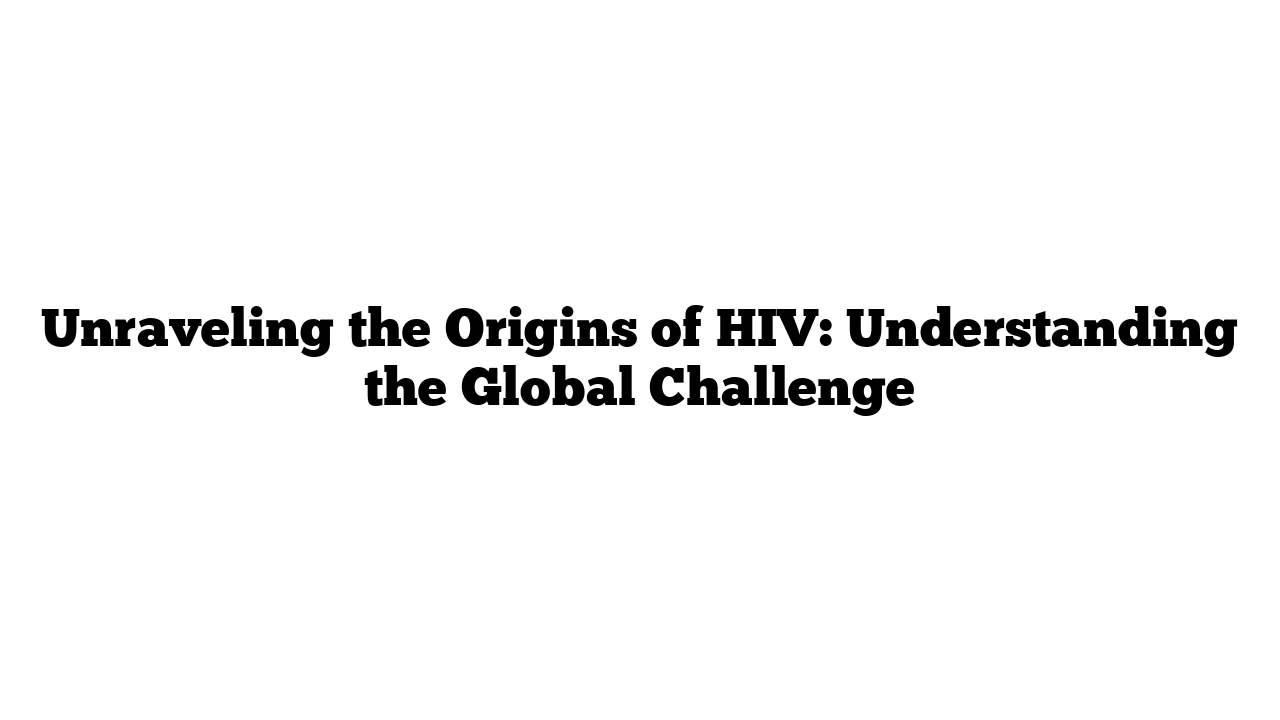Explained by an Expert
The story of HIV begins in the early 20th century, a time when Kinshasa, in the Democratic Republic of the Congo, was blossoming into a bustling urban center. As workers flocked to this growing city, a significant moment in history was quietly unfolding. In 1920, a butcher preparing bushmeat would unknowingly change the trajectory of public health forever. This butcher sustained a deep cut that led to the first known case of HIV infection. Today, the impact of HIV is staggering, with over 36 million lives lost to AIDS, a grim reality that highlights the urgency for a vaccine.
The Roots of HIV
HIV, or Human Immunodeficiency Virus, primarily causes AIDS (Acquired Immunodeficiency Syndrome). While the epidemic began in earnest during the 1980s, the origins of HIV date back further, with HIV-1, the most prevalent form today, likely emerging in the 1920s in Kinshasa. It is widely believed that the virus transitioned from simian immunodeficiency virus (SIV) found in apes to humans—a process known as zoonosis. This transmission was not a single event but occurred at least 12 times, leading to the dominant form of HIV we see today.
Kinshasa’s rapid urbanization and close living quarters fostered conditions ripe for the virus to spread. The combination of unsterilized needles in health clinics and a significant population of sex workers further exacerbated the situation. As the years progressed, the virus made its way to other regions, leading to alarming cases of mysterious infections and immune deficiencies in infants and adults alike.
A Series of Alarming Events
In the 1930s, unusual cases emerged in Germany, where newborns with healthy appearances were succumbing to mysterious infections. By 1969, a 16-year-old African American boy in the USA died from a rare cancer called Kaposi’s sarcoma, which is frequently linked to HIV. The 1970s witnessed an increase in deaths among drug addicts and the gay community in major cities.
The turning point came in 1981, when clusters of pneumonia were observed among five gay men in Los Angeles. These individuals were suffering from infections caused by normally harmless organisms. This alarming trend led scientists to investigate the underlying cause of these immune system failures.
The Quest for Answers
Initial hypotheses suggested that a virus was responsible. Researchers made significant strides in the early 1980s, isolating a virus from AIDS patients. By 1984, multiple teams identified the same virus, leading to the official naming of HIV. However, understanding how HIV causes AIDS required further exploration.
Once HIV enters the body, it specifically targets CD4 positive T cells, a crucial component of the immune system. Initially, people may experience mild symptoms like fever, but the virus can remain undetected for years, slowly dismantling the immune system. This insidious nature of HIV allows it to remain hidden while it continues to replicate, leading to the eventual development of AIDS.
How HIV Evolves
HIV primarily evolves through mutations, which occur during the virus’s replication. Each time the virus converts its RNA into DNA, there’s a small chance for errors—leading to genetic variations. Additionally, recombination allows the virus to exchange genetic material between different strains, making it increasingly adaptable and sometimes resistant to treatment.
Common Misconceptions About HIV
While understanding the science behind HIV is crucial, misconceptions abound. Here are some common concerns clarified:
- HIV Doesn’t Exist: Contrary to some claims, the overwhelming majority of researchers agree that HIV is real and causes AIDS.
- HIV Doesn’t Cause AIDS: This myth stems from a misunderstanding of the disease. All AIDS patients have been infected with HIV, regardless of other lifestyle factors.
- HIV Medications Are Harmful: While HIV medications can have side effects, they are vital in controlling the virus and maintaining a healthy immune system. Not taking these medications can lead to severe health consequences, including death.
It’s essential to recognize the impact of misinformation. A notable case was when a former president in South Africa delayed the distribution of HIV drugs, resulting in an estimated 330,000 unnecessary deaths.
As we continue to seek effective treatments and, hopefully, a vaccine for HIV, it’s vital to dispel myths and promote understanding. Researchers and healthcare professionals are dedicated to combating this global health crisis, emphasizing that knowledge is power in the fight against HIV.
For more information about possible cures and ongoing research on HIV, visit medicaltimes.io.
